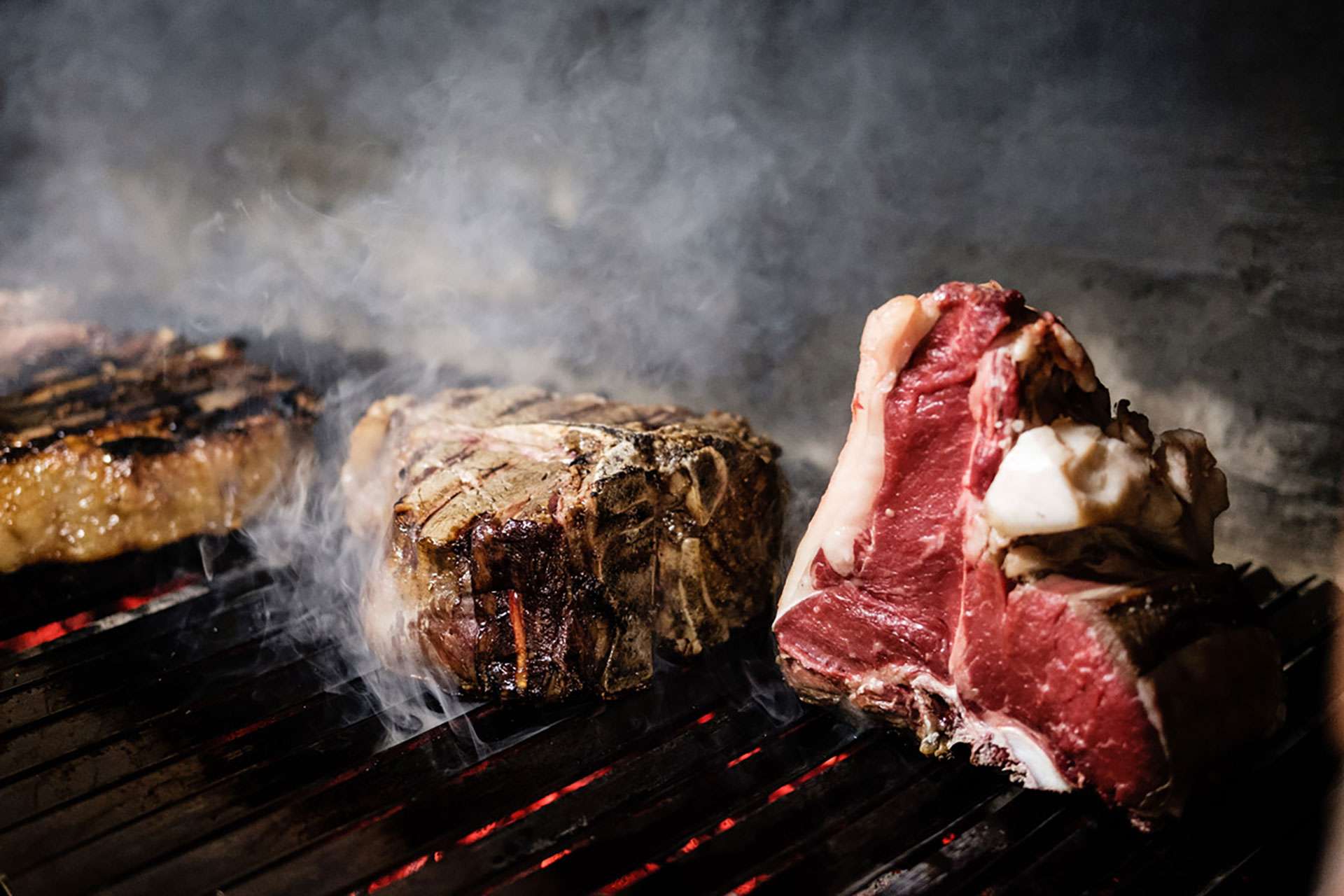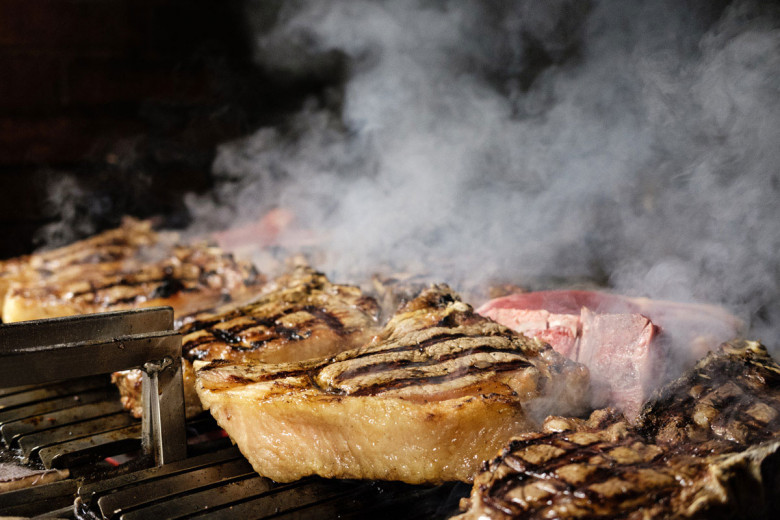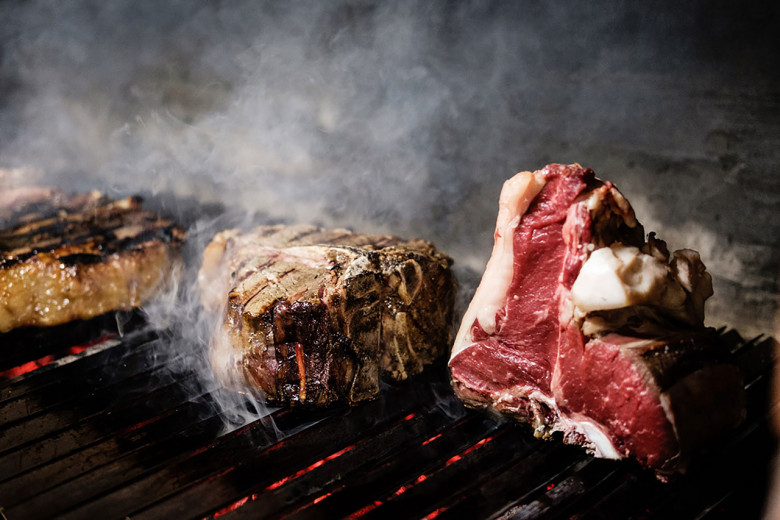From cinghiale (“wild boar”) to arista di maiale (“roasted pork”), Florence is the city of Renaissance art, architecture and, well... meat. And of course, the Bistecca alla Fiorentina is perhaps the most famous dish of all; a gloriously thick-cut t-bone steak that melts in the mouth.
For meat lovers staying in one of our villas near Florence, this guide will introduce you to the history and traditions behind the Bistecca alla Fiorentina and our favourite restaurants serving this quintessential Tuscan dish.
A guide to Bistecca alla Fiorentina and where to eat the legendary steak in Florence
“If it’s less than four fingers thick it’s not steak it’s Carpaccio!” ─ preparing the perfect Bistecca
Similar to the T-bone steak, the Bistecca alla Fiorentina is typically a Porterhouse cut of beef; cut on the bone between the sirloin and tenderloin. The cut of the meat will vary depending on where you try it; while a bistecca nel filetto is smoother and more buttery in texture, the bistecca nella costola is fattier and arguably more flavoursome.
Fiorentina steak traditionally comes from the Chianina Cow, one of the largest and oldest cattle breeds in Europe, dating back to Ancient Rome. They are named after the Valdichiana where the breed comes from, so if you are looking to try this steak outside of Florence, our villas near San Gimignano and villas near Siena make an ideal base. Since Chianina cattle are quite rare, a cut of meat from this cow can be expensive. However, for a PAT certified (the Italian equivalent of IGP) Bistecca alla Fiorentina, the steak can come from any breed, as long as they are bred in Tuscany — the most common being Chianina, Calvana and Maremma.
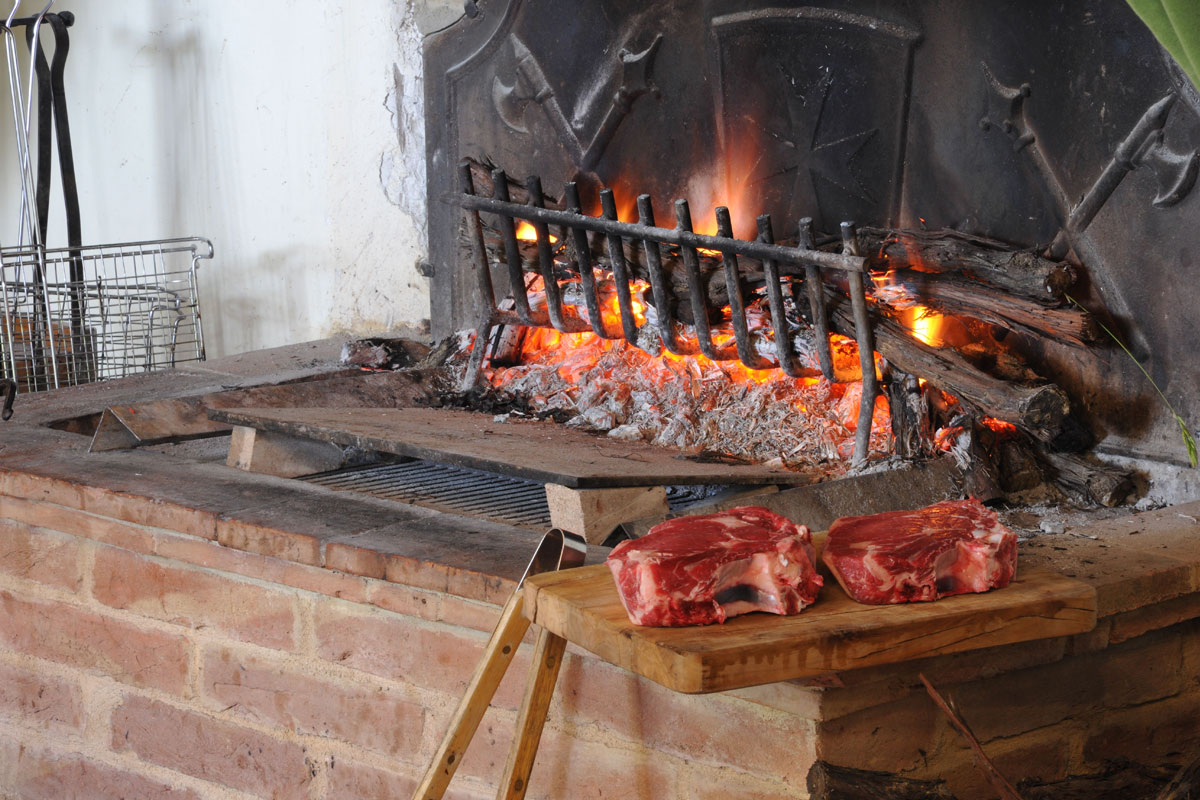
Dry-aged for two to three weeks, the Bistecca alla Fiorentina is an impressive, somewhat immense cut off meat. The Florentines tend to measure the thickness of the steak using fingers, where a truly authentic Bistecca will be at least 3-4 fingers or roughly 3 inches thick! The standard portion size is around 1kg of meat, but it can be even more — some restaurants will even let you handpick your cut of steak. If history is to be believed, the Florentine steak was born out of the spirit of sharing and as tempting as it might be to go it alone with this mouthwatering secondo, it’s best enjoyed when split between two people.
The Bistecca alla Fiorentina is traditionally cooked on a wood grill, but some restaurants use charcoal. In Italy, steak is best enjoyed rare and the Bistecca alla Fiorentina is no exception. Well browned on the outside and bloody on the inside, the steak is cooked very quickly. It is left for just a few minutes on each side to seal the meat and lock in all its flavour before it is salted and served with a drizzle of extra-virgin olive oil.
A Florentine feast: the history of Bistecca alla Fiorentina
As old as the Medici and older still, the Bistecca alla Fiorentina is a culinary symbol of the Renaissance city, rooted in the tradition of collective celebration. Cast your mind back to the 16th-century, long before the Ponte Vecchio became the bridge of goldsmiths and was still the centre for Florentine butchers, who would toss their scraps into the river Arno and sell their fresh cuts of meat from their shops over the water. At the time of the Medici, Florence was a worldly, cosmopolitan city, filled with travellers, merchants and ambassadors from all across the globe.
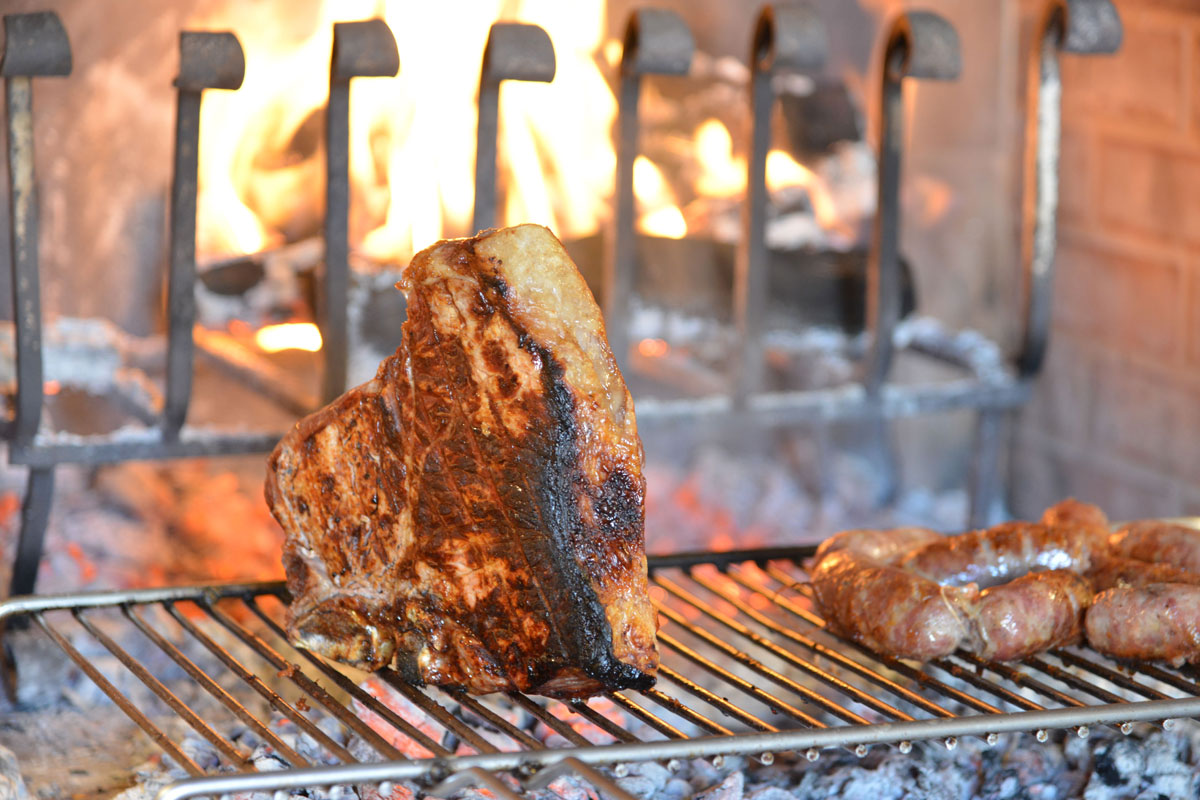
It is thought that a group of English merchants witnessed the sharing of roasted veal on the bone among the people of Florence to mark the Festa di San Lorenzo one day in August in the 1500s. The merchants declared it the “beef-steak”, a name borrowed into Italian to become Bistecca. A second theory places the English merchants at the occasion of the wedding between the Duke of Florence and Isabella de' Medici. The newlyweds were said to have roasted an entire Ox in the Piazza di San Lorenzo before distributing it to the people.
Whatever its true origins, the Bistecca alla Fiorentina still belongs to a culinary tradition of celebration and sharing among family and friends. There is even a painting in the Uffizi from 1624 called “Dispensa” by Jacopo Chimenti, a naturalistic still life that raised the legendary Bistecca into the realm of high art.
Our favourite restaurants serving Bistecca alla Fiorentina in Florence
The cosy trattoria with a traditional wood-burning stove: Sostanza
It doesn’t get more authentic than a perfectly tender Bistecca alla Fiorentina cooked on a historic wood-burning stove over a searing-hot charcoal grill. You have to walk through the kitchen to get to the bathroom, so you can witness the chefs first-hand as they prepare your food.
This cosy trattoria has been serving up Florentine favourites since 1869 and the steak and buttered chicken here are two meals you won’t easily forget. The white-tiled walls are lined with framed mementoes, vintage postcards, hand-scrawled notes and framed headshots from the various celebrity clientele who’ve dined here in the past. Tables are communal, seating is intimate and the ambience electric, so we recommend booking well in advance.
The trattoria serving up Tuscan specialities at the heart of Oltrarno: La Casalinga
Just moments from Santo Spirit, in the heart of the Oltrarno district of Florence, La Casalinga is a simple Italian restaurant serving Tuscan specialities. It’s only natural then that their huge Bistecca alla Fiorentina is top of the menu. Tucked away from the main tourist haunts, you’ll enjoy a more genuine, local experience. No fuss, just quality food.
The eclectic trattoria famous for its Bistecca alla Fiorentina: 13 Gobbi
At the heart of the historic centre, the eclectic decor at 13 Gobbi is typical of a traditional Tuscan trattoria, with beamed ceilings, terracotta floors and exposed brickwork walls lined with vintage posters and old wine crates. Alongside the Rigatoni al Pomodoro, Bistecca alla Fiorentina is a house speciality here, where all dishes are served on artisan, Vietri and Majolica ceramic plates.
A traditional Tuscan gem off the beaten path: All’Antico Ristoro di Cambi
Meat aficionados will thrive at this restaurant in Oltrarno; classic Tuscan cold cuts and thick portions of bistecca are piled along the counter as you enter. Ristoro di Cambi was first opened as a wine shop in the 1950s and the cantine still serves around a hundred different local Tuscan wines, so you can match the perfect Brunello or Chianti to your steak secondo. Cured meats and garlic bunches hang from the vaulted ceiling, which only adds to its character and charm.
The restaurant in the cellars of a grand Renaissance Palace: Buca Lapi
Situated beneath the Renaissance Palazzo Antinori, Buca Lapi is one of the oldest restaurants in Florence. Founded in 1880, the atmosphere and location of this elegant Tuscan restaurant is unique, with vintage posters covering the cavernous cellar ceiling. The Bistecca alla Fiorentina here is a fillet steak from the Chianina cow, which is cooked over a traditional wood-burning charcoal grill.
The home of the legendary blueberry steak: Acqua al 2
If you ever need a reason to come back to Florence (as if its beauty weren’t enough), Acqua al Due is it. It’s true what they say; no one can prepare a sauce like the Italians. We can’t speak for Bistecca alla Fiorentina, but Acqua al 2 has rightly earned international renown for its blueberry and balsamic fillet steaks. Start with their pasta tasting menu for primi, because honestly, their fresh pasta is too good to just choose one, followed by one of their unforgettable, melt-in-your-mouth steaks.
These Florentine restaurants serving mouthwatering steak are easily accessible from our luxury villas near Florence.
